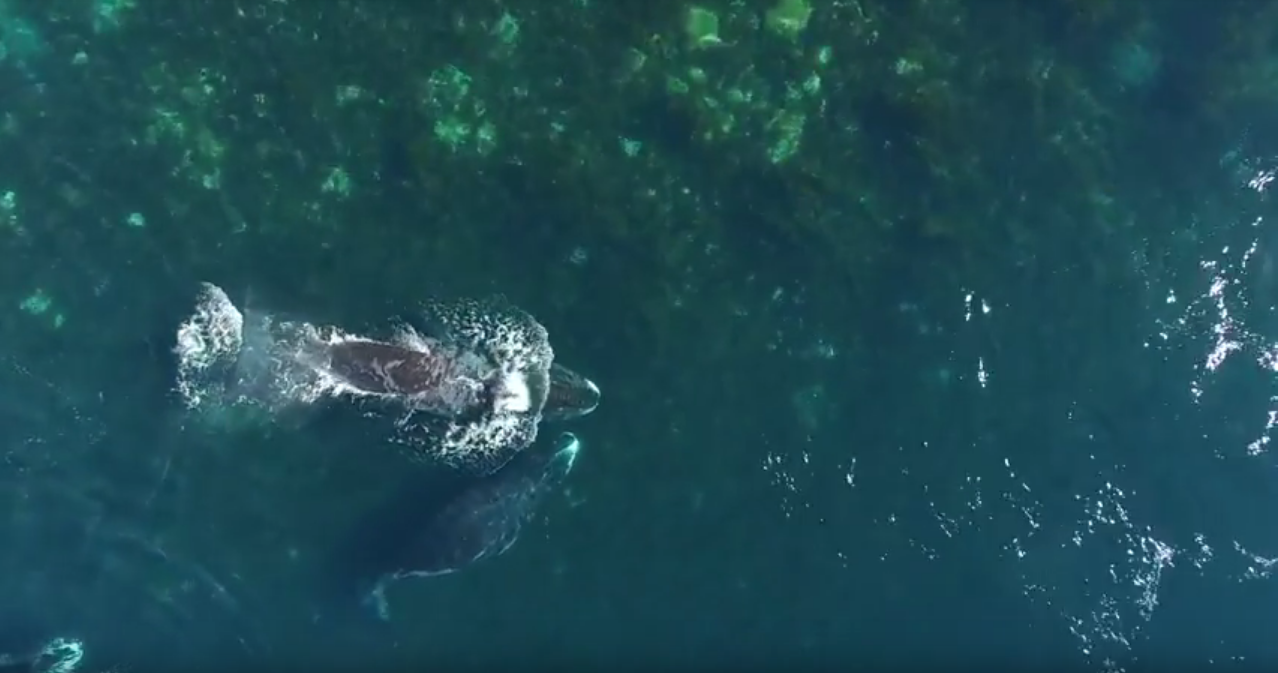Bowhead whales come to Cumberland Sound in Nunavut to exfoliate
November 22, 2017

November 22, 2017

Aerial drone footage of bowhead whales in Canada’s Arctic has revealed that the large mammals moult and use rocks to rub off dead skin.
The footage provides one answer to the mystery of why whales return to Cumberland Sound, Nunavut, every summer, and helps explain some unusual behaviour that has been noted historically by Inuit and commercial whalers living and working in the area.
“This was an incidental observation,” said Sarah Fortune, a PhD student at UBC’s Institute for the Oceans and Fisheries and lead author of a new study based on the findings. “We were there to document their prey and feeding behaviour, but we noticed some strange behaviour near the shore.”
Fortune and her colleagues -- William Koski, a whale biologist with LGL Limited, and local Inuit hunters and fishers from Pangnirtung – watched from a boat as the whales turned on their sides and waved their flippers and tails in the air. It was clear the whales weren’t there just to feed.
When the researchers sent drones up to record the animals from above, they saw large boulders underwater and realized that the whales were rubbing against rocks to remove dead skin.
“We now know that Cumberland Sound serves as a habitat for feeding and moulting,” said Fortune. “Very little is known about moulting in any of the large whale species.”
The warmer coastal waters of summer might help facilitate moulting, Fortune says. Ocean temperatures are expected to rise, and the change could have implications for the timing, duration and energy needed for moulting, as well as the whales’ diets.
As oceans change, relatively large-bodied, fatty Arctic crustaceans known as zooplankton ¾ the preferred prey of bowhead whales ¾ could move to new habitats further north while smaller-bodied, temperate species that are lower in energy are likely to dominate the waters. Scientists don’t know how whales will adapt to the changing environment.
Fortune hopes to conduct further studies to determine whether bowhead whales moult primarily during summer months, and throughout their range.
Bowhead whales are the longest-living marine mammals on the planet, with lifespans up to 200 years.
The study was published today in PLOS ONE: http://journals.plos.org/plosone/article?id=10.1371/journal.pone.0186156
We honour xwməθkwəy̓ əm (Musqueam) on whose ancestral, unceded territory UBC Vancouver is situated. UBC Science is committed to building meaningful relationships with Indigenous peoples so we can advance Reconciliation and ensure traditional ways of knowing enrich our teaching and research.
Learn more: Musqueam First Nation